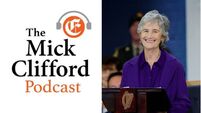Alex Cooney: What we must do to ensure our children are safe and happy online

The Cyber Safe Kids annual report released today reveals that four fifths of children they surveyed play online games and have their own social media profiles. While the internet brings many positives, there are dangers too, which we must address through regulation and education.
Covid-19 has brought children’s online use into sharper focus — for both positive and negative reasons.
On the positive side, it has highlighted how versatile the internet can be in terms of meeting their needs.













